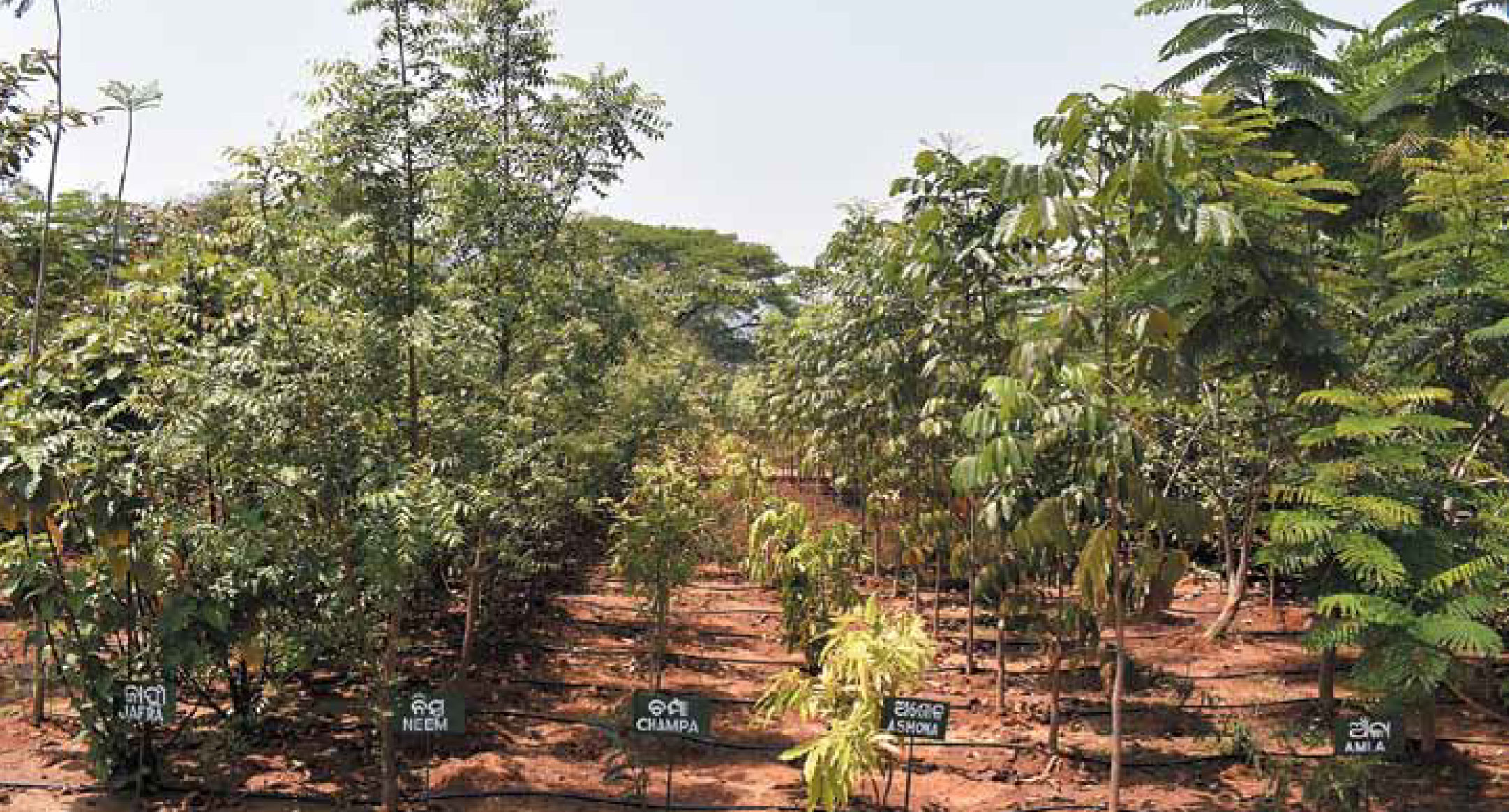
Miyawaki Technique of Plantation: My Experience in Malkangiri, Orissa
By Pradeep Mirase, IFS
We are living in a world where development is the utmost priority for everyone whether to develop knowledge, infrastructure in our own countries or any other field. In this period of development, we have taken our Mother Earth for granted and, as a result, we have forgotten the prophecy of give-and-take and we never gave Nature anything in return, and now the condition has gotten worse; Humans recklessly cut trees for their own benefits, to earn money. Rapid urbanisation has robbed the world of its green cover. As we progress to build more buildings and develop our infrastructure, we do so at the cost of Nature.
Hence, afforestation is a very important element to protect and save our beautiful Mother Earth. Trees not only help us sustain life but also help to reduce global warming which, if not seen, would be a major problem in future. A new technique of plantation, called Miyawaki Plantation, is making headlines for the rapid growth of plantation and is being used worldwide for the restoration of natural vegetation on degraded land.
In India, Miyawaki technique has been used at various places. This technique has been used by Forest Departments in different States in India. In Odisha, this technique has been tried on experimental basis in Malkangiri Forest Division in 2019. I would like to share the experience while trying this novel technique in Malkangiri.
Similar attempts have been made by a few private entities too, in Hyderabad, Chennai, Bengaluru, Amritsar, etc. Many private organisations like Afforest, Thuvakkam (Chennai) and SayTrees (Bengaluru) use the Miyawaki method in afforestation and making it an entrepreneurship prospect for future.
What is Miyawaki Technique?
“Miyawaki” seems a very familiar name,especially to those in Environment management wing of corporate sectors and to the members of Forest departments nowadays. Seems a Japanese name, but what for it is!! The same question came to my mind when my friend, Nitesh, a doctor by profession but a mate during civil service exam preparation, asked me regarding Miyawaki Technique of plantation. I had earlier heard about the technique but did not know much about it. He asked me the question thinking that as a member of Indian Forest Service, I might know about it, but I didn’t. This churned my mind and then started a session of Google search, collecting information, watching YouTube videos, reading about the attempts by corporate sector as well as few state forest departments. This has increased my interest more and more and an urge to try this technique and see how it turns out.
Named after the Japanese scientist Dr. Akira Miyawaki, this methodology has been extremely successful with over 17 million trees planted in 1700 locations.Such forests are multi-layered forests and mimic the densest parts of native undisturbed forests. Since the methodology rests on providing the best possible start to the forest, such forests can grow upto 10 times faster, be 30 times denser and 100 times more bio-diverse.
After reading and compiling information from different sources, I made a plan about how to implement this on field. I prepared a schematic flow process (Fig-1) and then used the documents available to substantiate the things technically
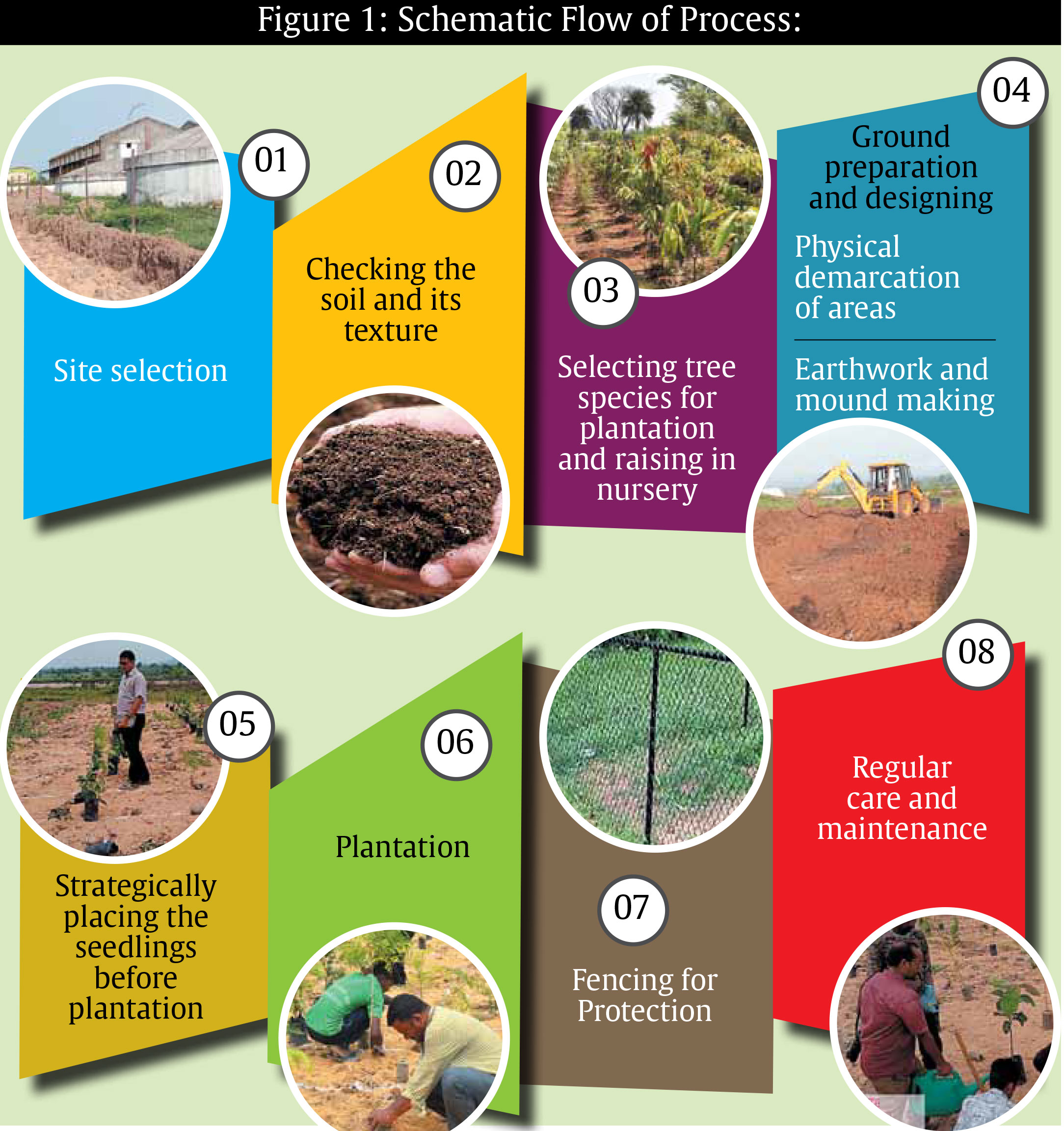
The selection of a suitable site for conducting this plantation on experimental basis was a tough task, as we wanted a site close to town for regular monitoring and in a relatively open area too. The siteat the back side of District Headquarters Hospital (DHH), Malkangiri was selected after searching for 2-3 different sites across the town.
The site was selected because it was a relatively plain land and was free from grazing by cattle. Besides, the hospital premises must have a large number of trees to provide clean, oxygen-rich environment to the patients. Hospital authorities also requested for plantation inside their campus. Hence, thought was given to develop an oxy-park in the hospital premises.
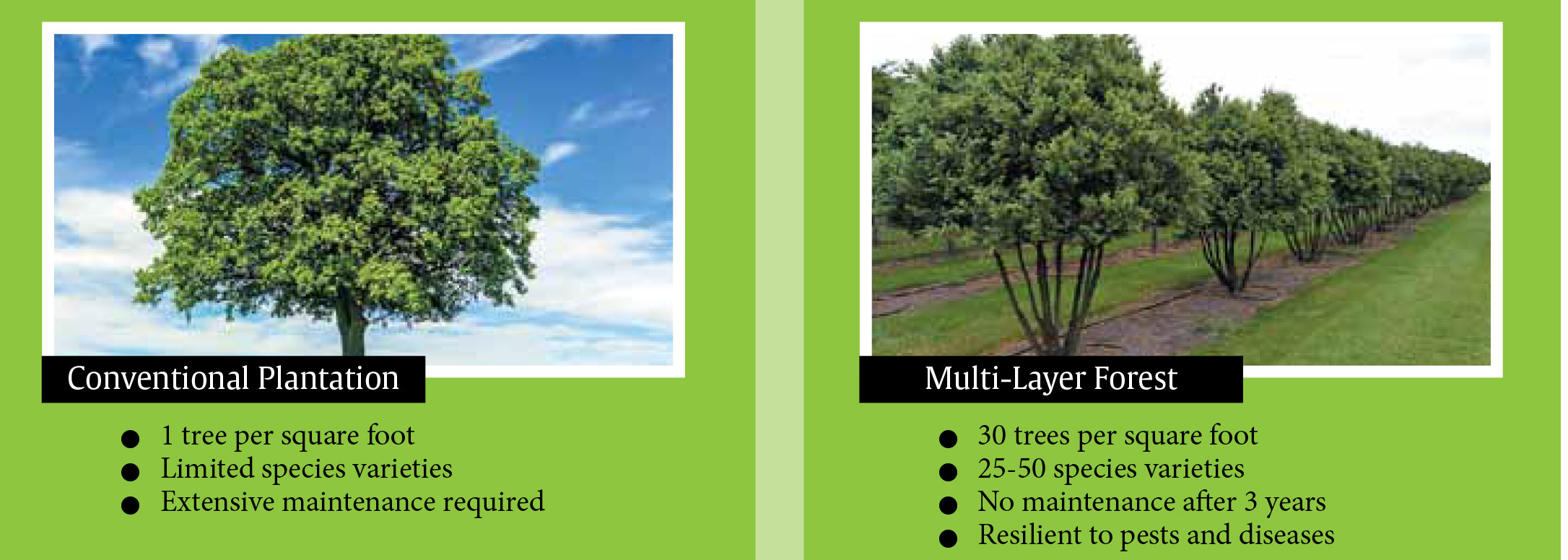
After the site selection, the first and foremost thing to know was the soil conditions of the area along with the climatic conditions to select suitable species for plantation.The Working Plan of the division was referred to for this purpose. As per the working plan of Malkangiri Division, the soil throughout the district is Red, Lateritic and Black type. The soil is mostly neutral to acidic in nature. Availability of Phosphorus and Potash are high in nature. The soil in Malkangiri town and the adjoining area is more of black soil type. As the soil testing facility was not available in Krishi Vigyan Kendra, Malkangiri district, we relied on working plan information for further planning.
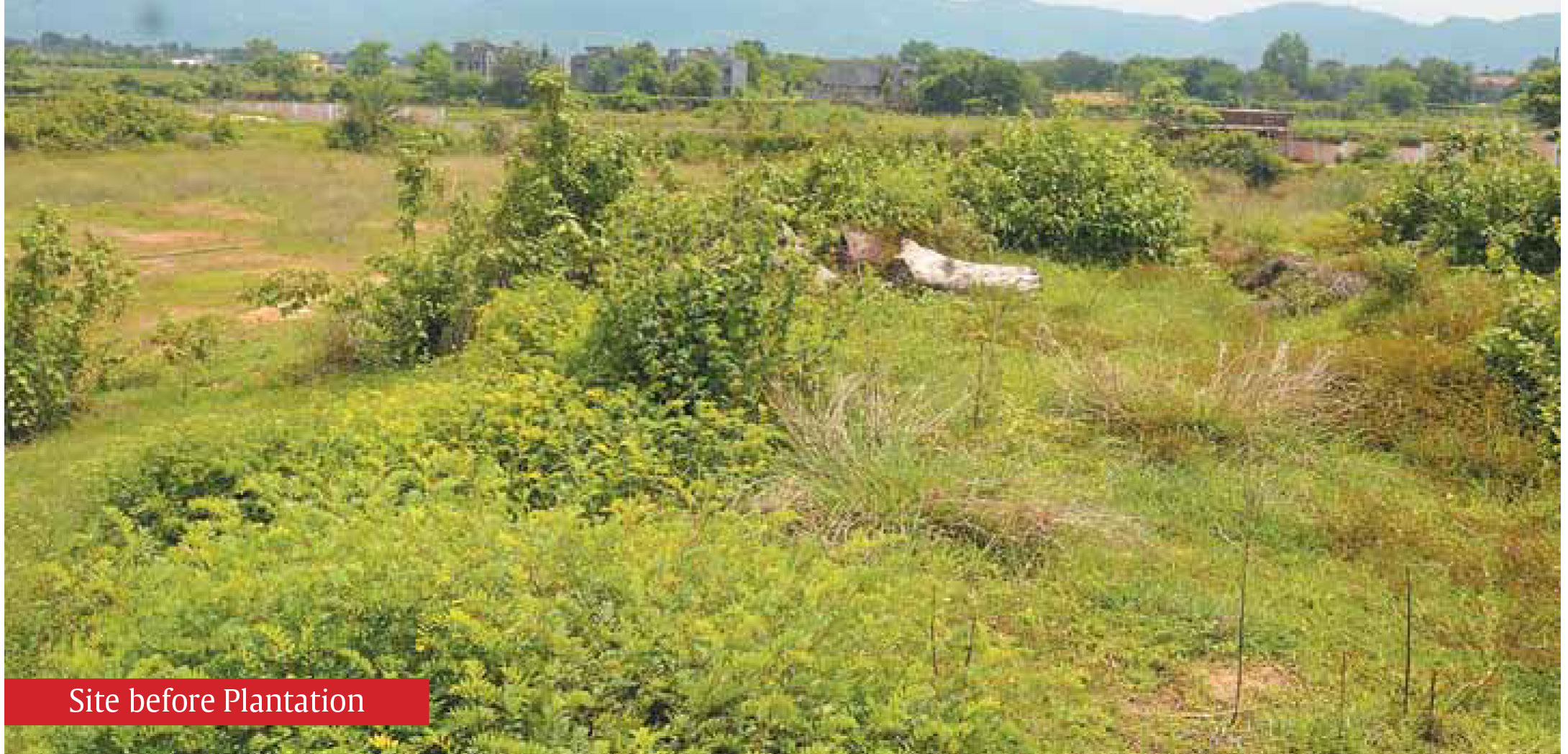
Now in order to select the species suitable for given soil and climatic conditions, we made a database of all the native species of Malkangiri area. Then from Working Plan document, we identified the species suitable to be planted as per the soil.Then we checked the native species saplings availability in the nursery, their age and sapling height. Tall seedlings preferably 2-3 years old were selected. In the list, we also included the use and medicinal benefits of the species. One of our ACFs, Mr Srikant Naik (Now DFO Karanjia), was instrumental in the selection of species. With his experience and knowledge of botany, the task of species selection became very easy
The main field task was still there, i.e. preparation on ground, plantation, care, etc., which were done very enthusiastically by our Range Officer and staff. They also took interest in this project, as this was something new for them.
Ground levelling and removal of bushes:
Weeds take away nutrition of the soil, and also restrict movement of materials and people. Hence, they should be cleaned either manually, or using a JCB if the area is huge. Hence, the ground was cleared of weeds and bushes using JCB and then levelled.
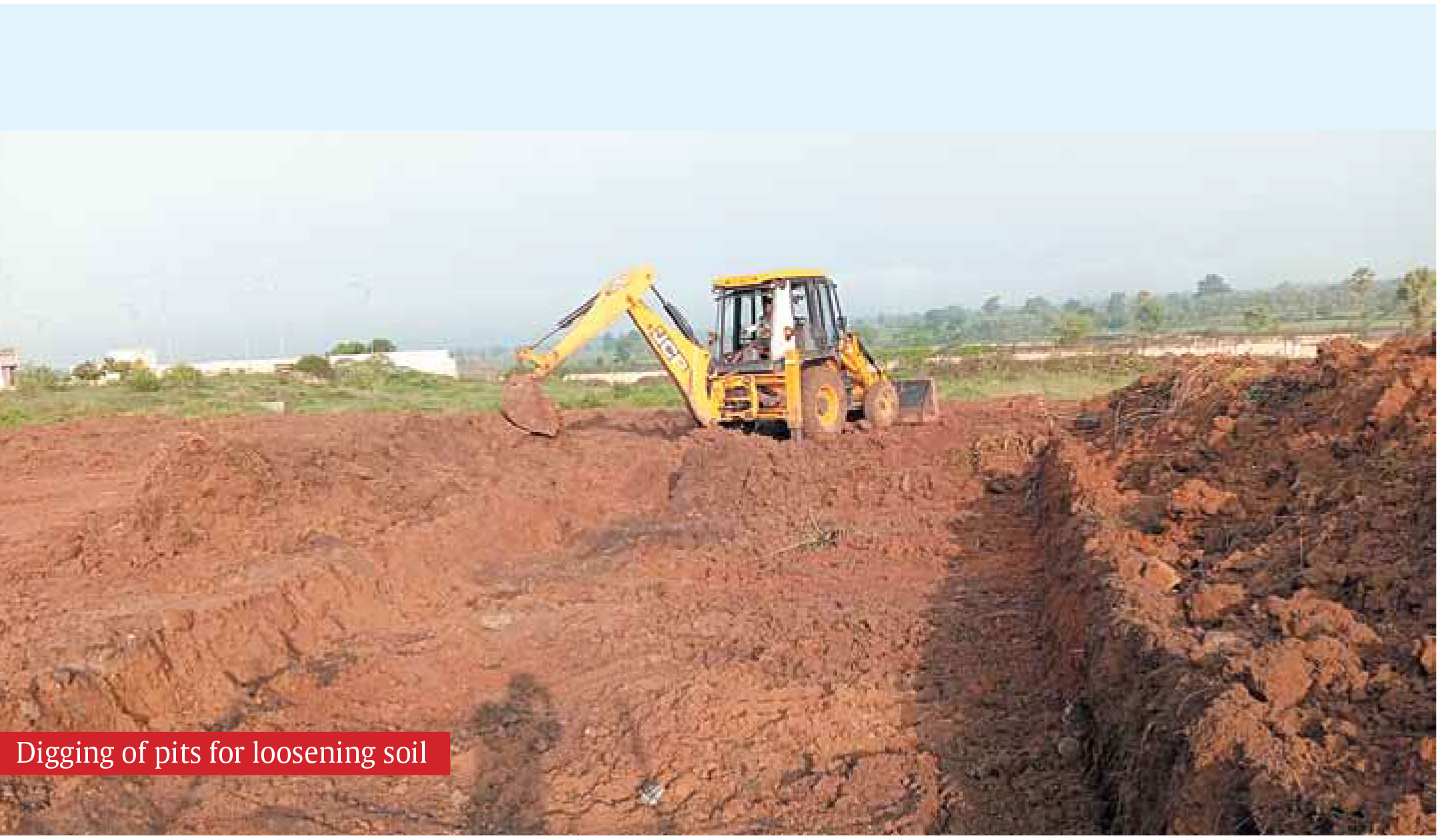
Physical demarcation of areas:
The areas were marked (with limestone powder and wooden peg/rope) before start of the earthwork. It was decided to make mounds of 20 feet width and length up to where the plain area ends. The rough plan was made accordingly.
Earthwork and mound making:
The ground was dug upto 3 feet depth as per demarcation madeto make the soil loose. The soil was then mixed with half the biomass or cow dung manure. The remaining soil was put back into the pit and spread uniformly.
Now the remaining biomass was mixed with this soil evenly. Afterwards, the rice husk was spread evenly on the prepared mound. The mounds were made just like raised beds in nursery
After the beds were prepared, marking was done on ground for plantation. In the Miyawaki method, all saplings will be planted very close to each other on a mound, unlike conventional plantations where individual pits are dug up for each sapling.
For this, the marking was done to plant the seedlings close to each other with a spacing of only one metre. To get a uniform look, marking was made so that the designated seedling could be planted there. The seedlings were then selected based on their height after maturity (the layer it will attain after full growth of the forest) and strategically placed alternately on the marked intersections, so that it will grow into a multi-layered, natural forest.
We tried to group plants that grow into different layers – shrub, sub tree, tree and canopy-in each sq. m. We took care not to place two trees of the same kind next to each other
We maintained a distance of 1 m between saplings. The goal was to have random, dense plantation of native tree species.
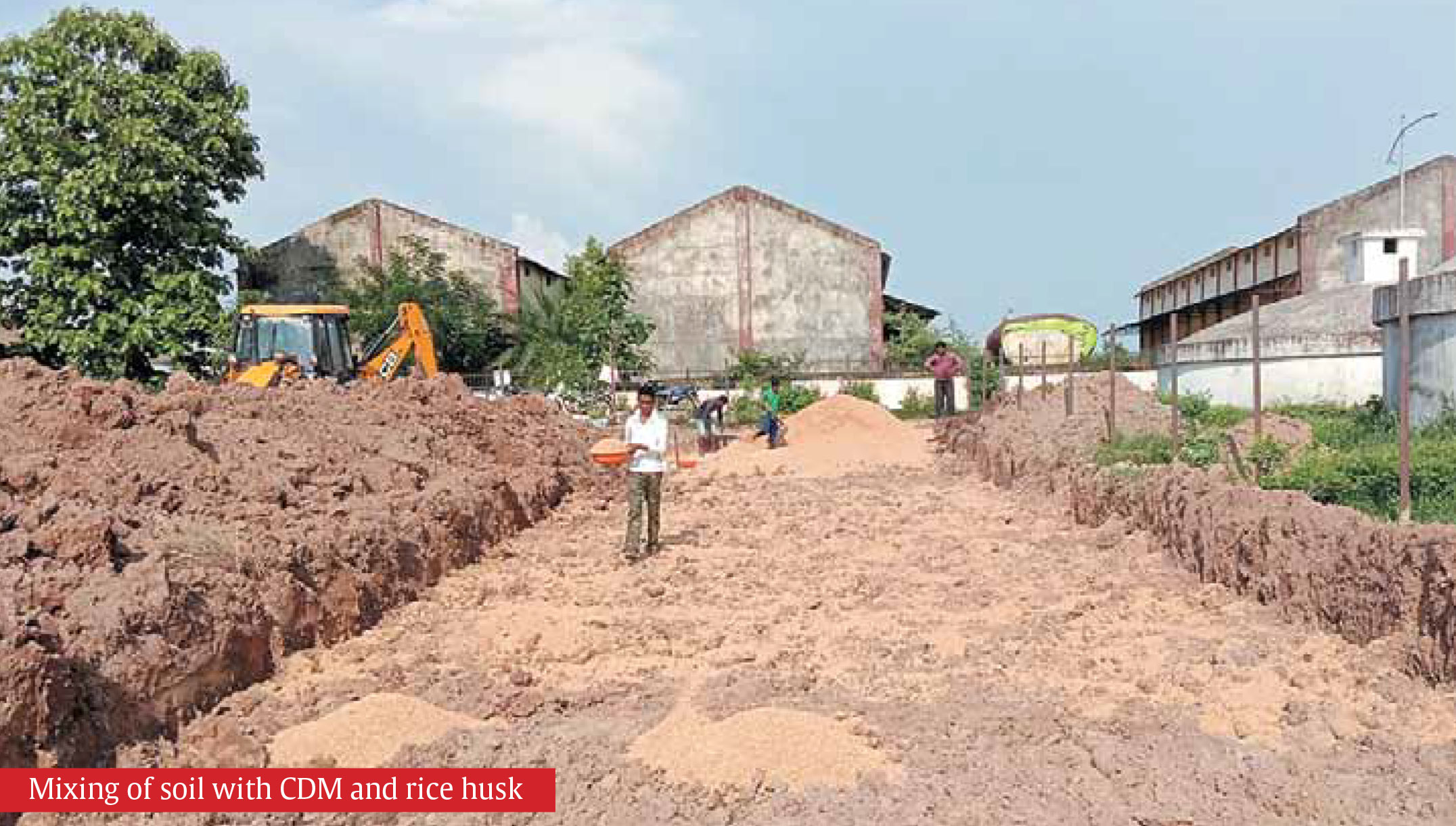
Strategic positioning of seedlings before Planting
Plantation:
To plant the tree, a small pit on the mound was dug, and the seedling was planted in the pit by removing its polythene bag. The soil outside was gently pressed around the stem of the plant to provide slight compaction. There should not be more than 8-10 people on a mound at a time, since the idea is to plant on loose, aerated soil.
Support the plants with sticks:
Saplings need support during the initial months so that they don’t droop or bend. Hence, support sticks were inserted into the soil close to the plant wherever necessary, without damaging the roots of the plant.
Fencing for protection
- Wire mesh fencing was made around the whole area to prevent any trespassing and loss to the seedlings planted.
- Fencing and front gate also provides an aesthetic appeal and an identity as plantation.

Regular care and maintenance
After Plantation, regular weeding, care and maintenance of the plantation is necessary
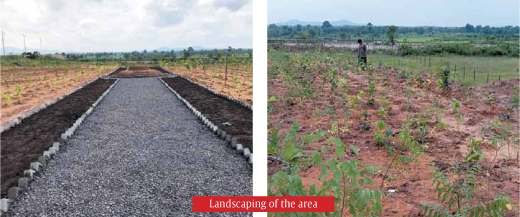
Analysis:
After the plantation was over, one exercise was meticulously done and that was the measurement of height and girth of the planted seedlings on 1st of every month. This was done to check the increase in height of the species with the microclimate they were getting due to dense and close-knit plantation.
It was found out that there was 2-2.5 times increase in height of the species planted within a span of just 10-11 months. As compared to the growth of seedlings in conventional plantation, the growth in Miyawaki Plantation was certainly more. Looking at the density the plantation has achieved within a span of 1 year, the results seemed encouraging. After almost 2.5 years, the height of the plants has increased more than five folds, which is evident from the following graphical representation.
The process, its concept note as well as cost norm for the Miyawaki Plantation proposed by Malkangiri Forest Division has been accepted by State CAMPA Authority and with this cost norm, few more divisions were allotted with plantation using Miyawaki technique with this cost norm in the subsequent years.
Miyawaki Plantation was later tried in two different locations in Malkangiri Forest Division in subsequent years; Jagannath Vatika at Balimelain 2020 and Sangam Vatika at Motu, Near Odisha-Andhra Pradesh border in 2021.
Few photos of these sites are below:
Jagannath Vatika, Balimela (Plantation done in July-August 2020

After plantation
Growth of planted seedlings after 11 months
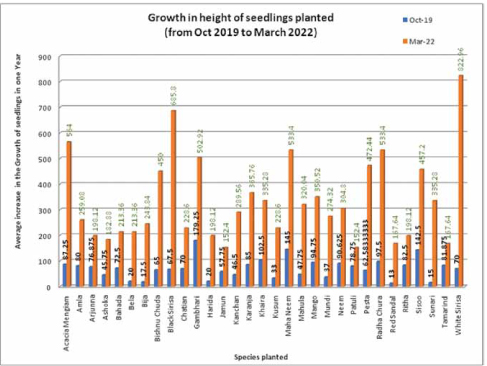
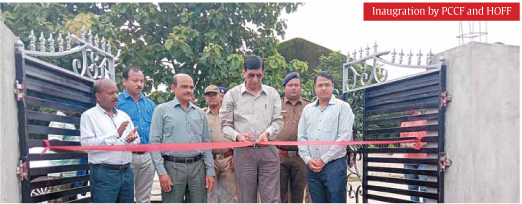
Sangam Vatika, Motu (Near Confluence of Saberi and Sileru River (Plantation done in July, 2021)
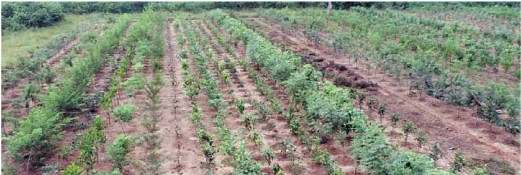
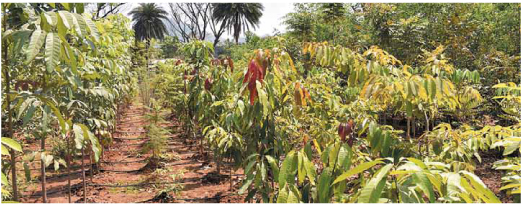
Conclusion:
Miyawaki Plantation is an effective technique for raising forests in a very short time period, especially in the urban areas. In India, the method is gaining momentum. Looking at the emphasis of Ministry of Forest, Environment and Climate Change, GOI, on the development of urban parks or Nagar Van, this technique will be helpful in developing green zones in otherwise treeless and concrete jungle. This will definitely help reduce the urban heat island effect, reduce air and noise pollution, make soil more nutritious, support local wildlife etc. The experiment of Miyawaki Plantation in Malkangiri Forest Division of Odisha needs to be replicated in many more forest patches in urban as well as sub urban areas.
References:
- Working Plan Document of Malkangiri (T) Forest Division for 2007-08 to 2016-17
- https://punemirror.indiatimes.com/ pune/civic/miyawaki-forests-cometo-pune
- https://www.thebetterindia. com/173614/mumbai-tree-plantingmiyawaki-forest-city-green-cover/
- Wikipaedia
- https://www.youtube.com/ watch?v=pLJAjM_05Mk(Youtube video on creating forest by Miyawaki Techniques by SayTrees.org)
- https://www.youtube.com/ watch?v=mjUsobGWhs8 (Youtube video on “How to grow forest in your backyard” by Shubhendu Sharma)
- Miyawaki Documentary (Hindi) by Aalap Chronicles (youtube)


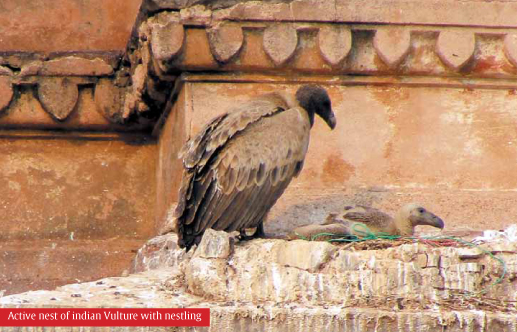


Agatat
June 24, 2024Great article! I appreciate the clear and insightful perspective you’ve shared. It's fascinating to see how this topic is developing. For those interested in diving deeper, I found an excellent resource that expands on these ideas: check it out here. Looking forward to hearing others’ thoughts and continuing the discussion!